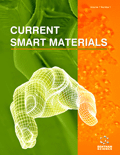Abstract
Background: The recent breakthroughs in the enhancement of zT on PbTe-based materials have been mostly attributed to the material microstructures incorporated during quench or hot press processes that cause the reduction of thermal conductivity. However, in the practical applications, the structural and thermoelectric configurations in the thermoelectric devices need to stay stable at the operational temperature for long periods of time. Recently, the thermal stability of melt-grown PbTeSe materials has been demonstrated experimentally. In this report, instead of the thermally unstable microstructural inhomogeneity/defects, single and multiple impurities were intentionally incorporated into PbTe crystals during the melt growth to modify their thermoelectric properties.
Methods: Fourteen PbTe crystals were grown from starting melts with various single and multiple dopants by un-seeded vertical directional solidification. A disc-shaped sample was sliced from each crystal and various characterizations, including thermal diffusivity, density measurements, electrical conductivity, Seebeck coefficient and Hall measurement, were performed on the same discs to study the effects of impurity incorporation on the resultant thermoelectric properties.
Results: The results show that the introduction of impurities reduces the thermal conductivity. The singly doped Sb-doped PbTe and high Sb-content PbAgSbTe crystals have higher thermal conductivities than the Bi- and In-doped PbAgSbTe crystals, and the multiple doping PbAgSbTe crystals have the lowest thermal conductivity. The measured Figure of Merits for thermoelectric applications, zT, shows that most of the samples have maxima between 1.05 and 1.1 in the 350 to 450°C temperature range, except the Cl-doped PbTe having the highest zT of 1.33 at 420°C and the multiple doping sample having the lowest zT of 0.6 at 450°C.
Conclusion: Although the introduction of impurities reduces the measured thermal conductivity, it also reduces the electric carrier conduction by slowing its mobility. From examining the Lorenz number, L, the ratio of thermal conductivity to the product of electrical conductivity and temperature, it was shown that the incorporation of multiple impurities has an adversary effect on the Figure of Merit due to the larger reduction in electrical conductivity than in thermal conductivity. Comparing with the theoretical calculations on electrical and thermal conductivity, to minimize Lorenz number it is suggested that (1) the dopant concentration, i.e., the dopant spacing, needs to be optimized to be comparable to the mean free path of phonons and (2) the concentration of extrinsic hole, i.e., the acceptor originated either from impurity or from native defect (such as Pb vacancy or interstitial Te) needs to be minimized to enhance electrical conductivity.
Keywords: Thermoelectric, PbTe, directional solidification, thermal diffusivity, seebeck coefficient, hall measurement.
Graphical Abstract
 25
25


